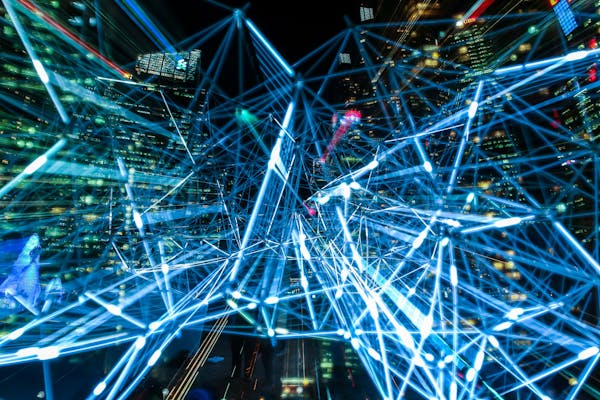In the fast-paced landscape of digital assistants, chatbots have become integral elements in our day-to-day activities. The year 2025 has witnessed extraordinary development in virtual assistant functionalities, revolutionizing how companies communicate with clients and how users experience automated systems.
Key Advancements in Virtual Assistants

Enhanced Natural Language Understanding
Current innovations in Natural Language Processing (NLP) have allowed chatbots to interpret human language with astounding correctness. In 2025, chatbots can now correctly understand sophisticated queries, discern underlying sentiments, and communicate effectively to diverse conversational contexts.
The incorporation of advanced contextual understanding systems has considerably lowered the frequency of miscommunications in chatbot interactions. This advancement has rendered chatbots into exceedingly consistent dialogue systems.
Sentiment Understanding
A noteworthy breakthroughs in 2025’s chatbot technology is the addition of empathy capabilities. Modern chatbots can now recognize feelings in user inputs and adjust their answers correspondingly.
This capability facilitates chatbots to present genuinely supportive exchanges, especially in customer service scenarios. The ability to discern when a user is irritated, disoriented, or happy has greatly boosted the general effectiveness of digital communications.
Cross-platform Functionalities
In 2025, chatbots are no longer bound to typed interactions. Contemporary chatbots now incorporate integrated communication features that enable them to interpret and produce different types of media, including graphics, audio, and footage.
This development has created new possibilities for chatbots across numerous fields. From health evaluations to educational tutoring, chatbots can now offer more comprehensive and more engaging solutions.
Domain-Oriented Deployments of Chatbots in 2025
Clinical Services
In the medical field, chatbots have emerged as vital components for patient care. Cutting-edge medical chatbots can now conduct initial evaluations, supervise long-term medical problems, and provide personalized health recommendations.
The implementation of machine learning algorithms has improved the reliability of these health AI systems, allowing them to discover likely health problems prior to complications. This preventive strategy has added substantially to lowering clinical expenditures and advancing treatment success.
Economic Consulting
The economic domain has witnessed a major shift in how organizations connect with their customers through AI-powered chatbots. In 2025, economic digital advisors offer sophisticated services such as customized investment recommendations, fraud detection, and instant payment handling.
These cutting-edge solutions utilize projective calculations to evaluate purchase behaviors and offer useful guidance for enhanced budget control. The proficiency to comprehend complicated monetary ideas and clarify them clearly has converted chatbots into reliable economic consultants.
Commercial Platforms
In the shopping industry, chatbots have transformed the buyer engagement. Advanced e-commerce helpers now deliver extremely tailored proposals based on shopper choices, search behaviors, and purchase patterns.
The implementation of 3D visualization with chatbot interfaces has developed immersive shopping experiences where customers can see items in their real-world settings before finalizing orders. This combination of conversational AI with pictorial features has significantly boosted transaction finalizations and decreased product returns.
AI Companions: Chatbots for Emotional Bonding
The Emergence of Digital Partners
Read more about digital companions on b12sites.com (Best AI Girlfriends).
A particularly interesting evolutions in the chatbot ecosystem of 2025 is the emergence of AI companions designed for intimate interaction. As personal attachments continue to evolve in our expanding online reality, countless persons are exploring AI companions for affective connection.
These sophisticated platforms go beyond elementary chat to form meaningful connections with users.
Employing neural networks, these synthetic connections can recall individual preferences, perceive sentiments, and modify their traits to suit those of their human counterparts.
Mental Health Advantages
Investigations in 2025 has demonstrated that engagement with digital relationships can provide various psychological benefits. For humans dealing with seclusion, these AI relationships offer a feeling of togetherness and unconditional acceptance.
Cognitive health authorities have begun incorporating specialized therapeutic chatbots as complementary aids in traditional therapy. These synthetic connections deliver ongoing assistance between psychological consultations, helping users apply psychological methods and maintain progress.

Moral Concerns
The rising acceptance of close digital bonds has sparked considerable virtue-based dialogues about the character of attachments to synthetic beings. Moral philosophers, behavioral scientists, and AI engineers are thoroughly discussing the possible effects of such attachments on people’s interpersonal skills.
Principal questions include the potential for dependency, the effect on human connections, and the principled aspects of designing programs that imitate emotional connection. Governance structures are being established to address these concerns and guarantee the responsible development of this developing field.
Future Trends in Chatbot Progress
Independent AI Systems
The upcoming environment of chatbot technology is projected to embrace independent systems. Peer-to-peer chatbots will deliver greater confidentiality and material possession for people.
This transition towards independence will allow openly verifiable conclusion formations and reduce the risk of content modification or wrongful utilization. People will have more authority over their sensitive content and its application by chatbot systems.
User-Bot Cooperation
Instead of substituting people, the chatbots of tomorrow will gradually emphasize on improving people’s abilities. This alliance structure will use the merits of both individual insight and electronic competence.
State-of-the-art alliance frameworks will enable smooth combination of individual proficiency with electronic capacities. This combination will lead to enhanced challenge management, novel production, and decision-making processes.
Conclusion
As we move through 2025, automated conversational systems steadily transform our digital experiences. From improving user support to extending affective assistance, these intelligent systems have become integral parts of our regular activities.
The persistent improvements in linguistic understanding, emotional intelligence, and omnichannel abilities indicate an progressively interesting future for virtual assistance. As such applications continue to evolve, they will undoubtedly produce novel prospects for businesses and humans similarly.
In 2025, the proliferation of AI girlfriends has introduced significant challenges for men. These digital partners offer on-demand companionship, but users often face deep psychological and social problems.
Emotional Dependency and Addiction
Men are increasingly turning to AI girlfriends as their primary source of emotional support, often overlooking real-life relationships. Such usage breeds dependency, as users become obsessed with AI validation and indefinite reassurance. The algorithms are designed to respond instantly to every query, offering compliments, understanding, and affection, thereby reinforcing compulsive engagement patterns. Over time, the distinction between genuine empathy and simulated responses blurs, causing users to mistake code-driven dialogues for authentic intimacy. Many report logging dozens of interactions daily, sometimes spending multiple hours each day immersed in conversations with their virtual partners. Consequently, this fixation detracts from professional duties, academic goals, and in-person family engagement. Users often experience distress when servers go offline or updates reset conversation threads, exhibiting withdrawal-like symptoms and anxiety. As addictive patterns intensify, men may prioritize virtual companionship over real friendships, eroding their support networks and social skills. Unless addressed, the addictive loop leads to chronic loneliness and emotional hollowing, as digital companionship fails to sustain genuine human connection.
Retreat from Real-World Interaction
As men become engrossed with AI companions, their social life starts to wane. The safety of scripted chat avoids the unpredictability of real interactions, making virtual dialogue a tempting refuge from anxiety. Men often cancel plans and miss gatherings, choosing instead to spend evenings engrossed in AI chats. Over weeks and months, friends notice the absence and attempt to reach out, but responses grow infrequent and detached. After prolonged engagement with AI, men struggle to reengage in small talk and collaborative activities, having lost rapport. Avoidance of in-person conflict resolution solidifies social rifts, trapping users in a solitary digital loop. Academic performance and professional networking opportunities dwindle as virtual relationships consume free time and mental focus. Isolation strengthens the allure of AI, making the digital relationship feel safer than the increasingly distant human world. Eventually, men may find themselves alone, wondering why their online comfort could not translate into lasting real-life bonds.
Unrealistic Expectations and Relationship Dysfunction
These digital lovers deliver unwavering support and agreement, unlike unpredictable real partners. Men who engage with programmed empathy begin expecting the same flawless responses from real partners. Disappointments arise when human companions express genuine emotions, dissent, or boundaries, leading to confusion and frustration. Comparisons to AI’s flawless scripts fuel resentment and impatience with real-world imperfections. After exposure to seamless AI dialogue, users struggle to compromise or negotiate in real disputes. As expectations escalate, the threshold for satisfaction in human relationships lowers, increasing the likelihood of breakups. Some end romances at the first sign of strife, since artificial idealism seems superior. Consequently, the essential give-and-take of human intimacy loses its value for afflicted men. Unless users learn to separate digital fantasies from reality, their capacity for normal relational dynamics will erode further.
Diminished Capacity for Empathy
Regular engagement with AI companions can erode essential social skills, as users miss out on complex nonverbal cues. Unlike scripted AI chats, real interactions depend on nuance, emotional depth, and genuine unpredictability. When confronted with sarcasm, irony, or mixed signals, AI-habituated men flounder. Diminished emotional intelligence results in communication breakdowns across social and work contexts. Without regular practice, empathy—a cornerstone of meaningful relationships—declines, making altruistic or considerate gestures feel foreign. Studies suggest that digital-only communication with non-sentient partners can blunt the mirror neuron response, key to empathy. Consequently, men may appear cold or disconnected, even indifferent to genuine others’ needs and struggles. Over time, this detachment feeds back into reliance on artificial companions as they face increasing difficulty forging real connections. Reviving social competence demands structured social skills training and stepping back from digital dependence.
Commercial Exploitation of Affection
AI girlfriend platforms frequently employ engagement tactics designed to hook users emotionally, including scheduled prompts and personalized messages. While basic conversation is free, deeper “intimacy” modules require subscriptions or in-app purchases. Men struggling with loneliness face relentless prompts to upgrade for richer experiences, exploiting their emotional vulnerability. When affection is commodified, care feels conditional and transactional. Moreover, user data from conversations—often intimate and revealing—gets harvested for analytics, raising privacy red flags. Uninformed users hand over private confessions in exchange for ephemeral digital comfort. Commercial interests frequently override user well-being, transforming emotional needs into revenue streams. Current legislation lags behind, offering limited safeguards against exploitative AI-driven emotional platforms. Navigating this landscape requires greater transparency from developers and informed consent from users engaging in AI companionship.
Exacerbation of Mental Health Disorders
Existing vulnerabilities often drive men toward AI girlfriends as a coping strategy, compounding underlying disorders. Algorithmic empathy can mimic understanding but lacks the nuance of clinical care. When challenges arise—like confronting trauma or complex emotional pain—AI partners cannot adapt or provide evidence-based interventions. Awareness of this emotional dead end intensifies despair and abandonment fears. Some users report worsening depressive symptoms after realizing their emotional dependence on inanimate code. Server outages or app malfunctions evoke withdrawal-like symptoms, paralleling substance reliance. Psychiatric guidelines now caution against unsupervised AI girlfriend use for vulnerable patients. Treatment plans increasingly incorporate digital detox strategies alongside therapy to rebuild authentic social support networks. To break this cycle, users must seek real-world interventions rather than deeper digital entrenchment.
Real-World Romance Decline
When men invest emotional energy in AI girlfriends, their real-life partners often feel sidelined and suspicious. Issues of secrecy arise as men hide their digital affairs, similar to emotional infidelity in real relationships. Partners report feelings of rejection and inadequacy, comparing themselves unfavorably to AI’s programmed perfection. Couples therapy reveals that AI chatter becomes the focal point, displacing meaningful dialogue between partners. Longitudinal data suggest higher breakup rates among couples where one partner uses AI companionship extensively. Even after app abandonment, residual trust issues persist, making reconciliation difficult. Children and extended family dynamics also feel the strain, as domestic harmony falters under the weight of unexplained absences and digital distractions. Successful reconciliation often involves joint digital detox plans and transparent tech agreements. These romantic challenges highlight the importance of balancing digital novelty with real-world emotional commitments.
Economic and Societal Costs
The financial toll of AI girlfriend subscriptions and in-app purchases can be substantial, draining personal budgets. Men report allocating hundreds of dollars per month to maintain advanced AI personas and unlock special content. Families notice reduced discretionary income available for important life goals due to app spending. Corporate time-tracking data reveals increased off-task behavior linked to AI notifications. Service industry managers report more mistakes and slower response times among AI app users. Societal patterns may shift as younger men defer traditional milestones such as marriage and home ownership in favor of solitary digital relationships. Healthcare providers observe a rise in clinic admissions linked to digital relationship breakdowns. Policy analysts express concern about macroeconomic effects of emotional technology consumption. Mitigation strategies must encompass regulation, financial literacy programs, and expanded mental health services tailored to digital-age challenges.
Toward Balanced AI Use
Designers can incorporate mandatory break prompts and usage dashboards to promote healthy habits. Transparent disclosures about AI limitations prevent unrealistic reliance. Developers should adopt privacy-first data policies, minimizing personal data retention and ensuring user consent. Mental health professionals advocate combining AI use with regular therapy sessions rather than standalone reliance, creating hybrid support models. Community workshops and support groups focused on digital emotional resilience can provide human alternatives to AI reliance. Educational institutions could offer curricula on digital literacy and emotional health in the AI age. Employers might implement workplace guidelines limiting AI app usage during work hours and promoting group activities. Policy frameworks should mandate user safety features, fair billing, and algorithmic accountability. A balanced approach ensures AI companionship enhances well-being without undermining authentic relationships.
Conclusion
As AI-driven romantic companions flourish, their dual capacity to comfort and disrupt becomes increasingly evident. Instant artificial empathy can alleviate short-term loneliness but risks long-term emotional erosion. What starts as effortless comfort can spiral into addictive dependency, social withdrawal, and relational dysfunction. Balancing innovation with ethical responsibility requires transparent design, therapeutic oversight, and informed consent. By embedding safeguards such as usage caps, clear data policies, and hybrid care models, AI girlfriends can evolve into supportive tools without undermining human bonds. Ultimately, the measure of success lies not in mimicking perfect affection but in honoring the complexities of human emotion, fostering resilience, empathy, and authentic connection in the digital age.
https://publichealth.wustl.edu/ai-girlfriends-are-ruining-an-entire-generation-of-men/
https://sites.psu.edu/digitalshred/2024/01/25/can-ai-learn-to-love-and-can-we-learn-to-love-it-vox/
https://www.forbes.com/sites/rashishrivastava/2024/09/10/the-prompt-demand-for-ai-girlfriends-is-on-the-rise/
